EU Drug Markets Analysis: Key insights for policy and practice

About this resource
This resource has been developed by the EMCDDA and Europol and co-produced with the EMCDDA Reference Group on Drug Supply Indicators. It draws on the detailed findings presented in EU Drug Markets: In-depth analysis, the fourth comprehensive overview of illicit drug markets in the European Union. It offers a strategic and top-level summary for policymakers and decision-makers, to support the development and implementation of policies and actions in Europe, based on a robust understanding of the current drug landscape and emerging threats. It also serves practitioners working in the field and is intended to raise awareness among the general public about these issues.
Foreword
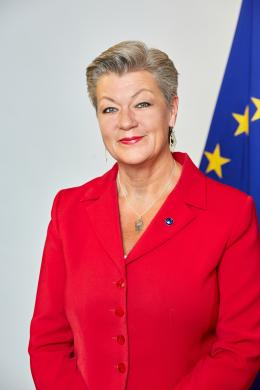
The market for illicit drugs, controlled by criminal networks, represents a serious security threat to the European Union. It endangers public health and safety while fostering extreme violence and corruption, undermining the very fabric of society, democracy and the rule of law. The increasing diversity and complexity of EU drug markets also presents new challenges, requiring a comprehensive European drug alert system to improve responses and prevent the situation from escalating.
One critical aspect of the threat from drug markets lies in the exploitation of key logistical infrastructure, particularly seaports. Criminal networks infiltrate these hubs of trade and transportation, turning them into conduits for unprecedented drug flows. The economic and social repercussions of these developments pose urgent challenges, escalating the security threat and further increasing the availability of illicit drugs in Europe. The European Union therefore needs to strengthen the resilience of these and other logistics hubs to prevent their further exploitation for illicit drug trafficking.
The recruitment of young people by criminal networks involved in drug markets compounds this crisis. Vulnerable youth are lured or forced to partake in dangerous and illicit activities by criminal organisations. This jeopardises their future opportunities and perpetuates a cycle of crime and violence, highlighting the need for a strong focus on prevention.
Disrupting these criminal networks poses a complex challenge, as they constantly adapt to external shocks and increasingly use specialist criminal service providers. Given the globalised nature of these networks, aided by technological developments, they also increasingly coordinate their illicit drug trafficking activities from outside the European Union. This underlines the crucial role of international cooperation in disrupting criminal supply routes and networks. While arrests of key individuals remain important, it is vital to increase law enforcement and judicial authorities’ capabilities to dismantle whole criminal networks, particularly in cooperation with international partners.
The EU Drugs Strategy and its Action Plan and the Security Union Strategy equip the European Union with the tools to tackle this evolving threat landscape and support Member States in fostering security for all residents of the European Union. These initiatives are augmented by the EU Roadmap to fight drug trafficking and organised crime. The successful launch of the European Ports Alliance on 24 January 2024 is a significant step in its implementation. In addition, the Commission has conducted a Schengen thematic evaluation focusing on drugs trafficking that identified best practices in the area of police cooperation, protection of external borders and management of IT systems.
The EMCDDA and Europol play a central role in these endeavours, supporting Member States and cooperating with third countries to strengthen Europe’s preparedness and response to illicit drug flows. These strategic insights from the two agencies’ joint drug markets analysis provide a robust framework for understanding and responding to drug markets at EU and international level.
Ylva Johansson
European Commissioner Migration and Home Affairs
Introduction
Understanding the multifaceted drug market in a globalised world

The illicit drugs trade continues to dominate serious and organised crime in the European Union, in terms of the number of criminals involved and the vast profits generated. This market is part of a complex global criminal enterprise, with cross-border collaboration through facilitators and brokers creating a fluid and networked environment.
Globalisation continues to have a significant impact as criminals exploit the opportunities provided by interconnected networks of communication, trade and transport for criminal cooperation and integration along supply chains. These developments have influenced links between the illicit drugs trade and other crime areas in the European Union, such as the trafficking in firearms, as drug trafficking networks require a range of tools and capacities to facilitate their activities.
The European drug market has seen an unprecedented increase in the availability of illicit drugs, evidenced by elevated drug purity and stable prices at retail level, as well as a diversification of drugs and consumer products. This situation is also driven by sustained high levels of demand and criminal innovation, as illicit drug markets have become highly resilient and adaptable in the face of unexpected global events.
The EU drug market has wide-ranging impacts on our society, evident in drug-related deaths and the number of people seeking treatment. It also fuels the expansion of organised crime, increased levels of corruption and the exploitation of vulnerable individuals. Much of the violence associated with serious and organised crime in Europe is related to the drug trade. Meanwhile, illicit drug production leads to environmental damage, while the economy and the rule of law are undermined by the exploitation of legal businesses.

The constantly evolving and multifaceted drug market demands a multi-pronged approach, involving law enforcement, public health, education and international cooperation. Recognising the global interconnectedness of markets and criminal actors is crucial to developing effective responses to address current and future threats, as developments in other parts of the world will continue to influence the EU drug markets.
These complexities underscore the need for robust responses, as brought forward in the new EU Roadmap to tackle drug trafficking and organised crime. Priority areas include reducing supply by disrupting high-risk criminal networks and the key brokers and facilitators, such as money launderers, on which they rely, while simultaneously improving access to evidence-based harm reduction, treatment and rehabilitation measures. Ultimately, we need to strengthen social resilience in the European Union and address the underlying socioeconomic factors that contribute to the harms and act as drivers of the illicit drug market.
Alexis Goosdeel
Director, EMCDDA
Catherine De Bolle
Executive Director, Europol
Current landscape and key threats

This section presents key insights from the current analysis of EU drug markets, covering the range of market dynamics, geopolitical factors, criminal operations and socioeconomic consequences. The latest data and analysis show a large, complex and constantly evolving EU drug market (Figure 1).
EU drug market: significant financial impact
Based on 2021 data, the EU drug market is estimated to have a minimum retail value of at least EUR 31 billion. It is a major income source for organised crime. A key feature of this market is the interconnectedness between different illicit drugs, with criminal networks and key brokers and facilitators often engaging in poly-drug criminality. The large EU drug market also intersects with, and has a significant impact on other crime areas, such as the trafficking in firearms and money laundering.
Figure 1. EU drug markets ecosystem

High availability and product diversification: increasing risks for users
Availability remains high across the main drugs used in Europe, evidenced by the large and in some cases increasing quantities that continue to be seized in the European Union (Figure 2). In addition, the market for illicit drugs is characterised by the diversification of consumer products and the widespread availability of a broader range of drugs, including new psychoactive substances, often of high potency or purity. Specialised equipment may be required to meet the detection and monitoring challenges posed by this diversification. The recent emergence of highly potent opioids, particularly benzimidazoles (nitazenes), poses a particularly complex threat to public health due to their increased risk of life-threatening poisoning. The potential emergence of new patterns of consumption in Europe is also a key threat, due to the availability of cheap and highly potent or pure drugs. This is particularly the case for cocaine, which has seen unprecedented levels of availability.
Higher trafficking efficiency: intensifying pressure on Europe’s logistics hub
A major contributing factor to increasing efficiency is the trend towards trafficking larger individual consignments of drugs by sea, exploiting containers flowing through global logistics hubs. As a result, over the last ten years, the quantity of drugs seized in the European Union has increased considerably while the number of seizures across most drug types has decreased (Figure 2). The decrease in the number of seizures may partly be explained by a reduced focus and de-prioritisation of enforcement of drug possession and use offences in some Member States.
The source data for this graphic is available in the source table on this page.
Europe takes a central position in drug production and trafficking
Industrial-scale production of cannabis and synthetic drugs, such as amphetamine, methamphetamine, MDMA and cathinones, takes place in the EU for both domestic and international markets. The scale and complexity of synthetic drug production in Europe is driven by innovation in methods and equipment, and the availability of the key chemicals needed. Large-scale cocaine processing also now takes place inside the European Union. Europe is also likely an important transit zone for global drug flows, particularly cocaine from Latin America and to a lesser extent amphetamine in the form of captagon tablets from Syria and Lebanon.
Criminal adaptability: a major challenge for law enforcement
A diverse range of criminal networks operate in the EU drug market. These networks demonstrate a high level of adaptability, capitalising on technological advancements and broader societal changes, exploiting legal business structures and taking advantage of opportunities in the traditional and digital economies. Criminals often rely on other networks or brokers to facilitate their illicit activities. This also gives them the flexibility to diversify sources and products, trafficking routes and concealment methods – enhancing their efficiency and adaptability to minimise risks and maximise profits.
Drug markets: resilient to major external shocks

The EU drug market has shown remarkable resilience to global crises, instability and significant political and economic changes. Recent examples of such shocks include the COVID-19 pandemic, Russia’s war on Ukraine and the Taliban’s rise to power in Afghanistan. In response, criminal networks have adapted, changing trafficking routes and diversifying their methods. Simultaneously, these developments have also influenced the emergence of new markets and in some cases appear to have changed consumer preferences.
Interplay between licit and illicit markets: adding a layer of complexity
Illicit drug markets and the regular economy intersect in numerous and significant ways. For example, criminals exploit the commercial transport infrastructure to traffic drugs and they use loopholes in legislation to access chemicals for illicit drug production. These intersections are also visible on the cannabis and opioid markets, where some products legally available for medicinal or industrial purposes may be diverted. For example, legal industrial hemp cultivation and CBD (cannabidiol) production may be exploited for the manufacture of unauthorised cannabis products.
Extreme violence: putting a strain on local communities and society
Some EU Member States are experiencing unprecedented levels of drug market-related violence, often related to the cocaine and cannabis markets. This appears to be concentrated in distribution hubs and in competitive retail markets. Such violence includes killings, torture, kidnappings and intimidation, and often takes place between criminal networks, although innocent people are also victims. This has a severe impact on society as a whole, increasing the perception of public insecurity.

Corruption: facilitating drug trafficking and undermining the rule of law
Criminal networks rely on corruption across all levels of the drug market to facilitate their activities and mitigate risks, including those posed by the criminal justice system. Drug-related corruption also targets individuals with access to key infrastructure, such as those working in logistics hubs, the legal profession and the financial sector. Corruption, which is often linked to violence, has a corrosive effect on the fabric of society and undermines governance, creating systemic vulnerabilities and sometimes coercively involving people in criminal activity.
Technology and innovation: key drivers of drug markets
Innovation in illicit drug production results in higher outputs, increased potency or purity, and a broader range of consumer products. Criminal networks continue to introduce novel chemicals to produce synthetic drugs, posing complex challenges for law enforcement. Innovation in the chemical concealment of drugs also significantly complicates detection and interdiction. Simultaneously, criminal networks leverage digital advances and technological opportunities to conceal illicit communication, improve drug distribution models and reduce risk. An example of this is the recent rise in the use of social media and instant messaging applications for the retail sale of drugs, making a wide range of substances more accessible.
Key developments by drug

Cannabis
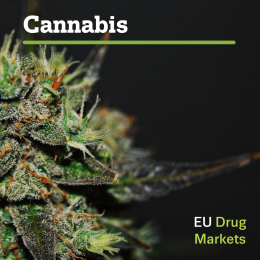
Cannabis is the most commonly used illicit drug in the European Union, with an estimated 22.6 million adults having used it within the last year, and it remains the largest drug market in the European Union.
In 2021, cannabis seizures in the European Union reached record levels, with 256 tonnes of herbal cannabis and 816 tonnes of resin seized. Criminal networks operating in the illicit cannabis market are diverse and adaptable, often involved in trafficking multiple drug types and associated with violence, corruption and misuse of legal business structures. A large share of the violence between criminals in recent years has been linked to the cannabis market, in part because of the diversity and profitability of the market.
Most herbal cannabis consumed in the European Union appears to be produced here, particularly in Spain where large-scale cannabis cultivation sites have been dismantled. The Western Balkan region also plays a role in herbal cannabis supply, while Morocco remains the largest cannabis resin supplier. However, there are signals of increasing resin production in the European Union, and although the quantity is likely to be small compared to that of Morocco, this represents an emerging threat. Cannabis production carries a significant environmental impact due to energy and water usage, as well as chemical pollution.
Cannabis potency has surged over the last decade for both herbal cannabis and resin, and an increasing diversity of consumer products has been observed. These include oils, extracts, edibles and vaping products, trafficked from North America and produced within Europe. Both synthetic and semi-synthetic cannabinoids also continue to emerge in various forms of consumer products.
The ongoing policy debate around cannabis, globally and within the European Union, has led to a complex and constantly evolving legal and regulatory landscape. This has resulted in considerable national and sometimes local heterogeneity, potentially creating additional challenges for law enforcement and criminal justice systems.
Find out more in the EU Drug Market: Cannabis
Cocaine
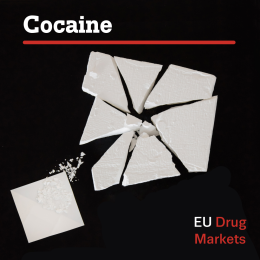
Cocaine is the second most commonly used illicit drug in European Union and the second largest illicit drug market by revenue generated. The consumer market for cocaine is on the rise, potentially influenced by the unprecedented availability of low-cost, high-purity cocaine. There are also signals of a potential shift in Europe’s role in the global cocaine trade. This can be seen in the increasing use of the European Union as a transit point for cocaine shipments to other regions and the growing trend for some stages of cocaine production to take place within the European Union.
Evidence indicates that Latin American and European criminal networks collaborate in cocaine production in the European Union. This involves the (rarely detected) smuggling of large quantities of coca paste and cocaine base to Europe for further processing into cocaine hydrochloride. Importation of cocaine base to the European Union also heightens the risk of new smokeable cocaine products (e.g. crack cocaine) gaining more prominence in European consumer markets.
Record quantities of cocaine have been seized in the European Union yearly since 2017, with 303 tonnes seized by Member States in 2021. Belgium, the Netherlands and Spain report the highest volumes of seizures, reflecting their importance as entry points for cocaine. Preliminary data indicate that seizures increased further in 2022, including in key entry points such as Antwerp.
Large quantities of cocaine are trafficked through Europe’s seaports in intermodal shipping containers. This has led to an unprecedented availability of cocaine in the European Union. Corruption and intimidation of port workers are key enablers of cocaine smuggling, although corruption related to this market extends to other sectors of society.
High-risk criminal networks dominate the cocaine trade in the European Union, generating significant profits. As with other drugs, these networks are enabled by facilitators and brokers in a fluid and interconnected environment. Serious violence related to the cocaine market appears to be increasing in key entry points, although it affects society as a whole.
Find out more in the EU Drug Market: Cocaine
Heroin and other opioids
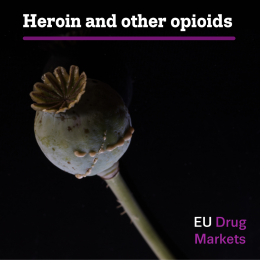
Heroin continues to be the most commonly used illicit opioid and is a significant contributor to the harms of illicit drug use in the European Union. However, the landscape of Europe’s opioid problem is evolving and growing in complexity, influenced by developments globally, with implications for preparedness and response.
Importantly, political changes in Afghanistan, the main source of the heroin consumed in Europe, are expected to disrupt this market. The Taliban’s announced drug ban in April 2022 appears to have taken effect as available data suggest a significant reduction in opium poppy cultivation and heroin production in 2023. This may precipitate a decrease in heroin availability in the European Union that could lead to market gaps being filled by other drugs, including potent synthetic opioids, with significant negative impact on public health and security.
Heroin trafficking to the European Union increasingly relies on maritime routes and in particular the use of global container traffic and ferries departing from Türkiye. These methods allow large quantities of heroin to be smuggled in single shipments, since the use of transhipment points conceals the origin and nature of suspicious consignments.
Turkish criminal networks continue to dominate the wholesale trafficking of heroin to the European market, although other networks, such as those linked to the Western Balkan region, are also active in heroin trafficking. These networks cooperate with suppliers in the main production region and with partners in key distribution hubs in the European Union, aided by the exploitation of legally established, acquired or infiltrated companies along the trafficking routes. Trafficking of acetic anhydride, the main chemical required for heroin production, from the European Union also continues to take place on the ‘reverse Balkan route’ via Türkiye. However, the apparent recent reduction in heroin trafficking on the Balkan route may lead to changes in the future.
Find out more in the EU Drug Market: Heroin and other opioids
Amphetamine

The European Union is an important market globally for amphetamine, with about 90 tonnes of the drug consumed in 2021. It is a relatively inexpensive stimulant with a large stable market in the European Union. While amphetamine is generally low in price and purity, high-purity and low-cost amphetamine is found in Belgium and the Netherlands – the main production centres. Some amphetamine production also occurs in Germany and Poland, and occasionally elsewhere.
Criminal networks continually adapt and improve amphetamine production methods. The supply of precursors and essential chemicals plays a crucial role in this, although the criminal infrastructure involved remains largely an intelligence gap. The main amphetamine production method uses BMK as a starting material, which is mainly obtained from designer precursors. However, other methods may become more prominent in future, potentially circumventing the reliance on BMK. The environmental impact of amphetamine production is considerable due to the large amounts of chemical waste generated.
Amphetamine trafficking within the European Union mainly occurs over land, and sometimes in conjunction with other drugs. Smaller quantities are trafficked through postal and parcel services, often linked to the online trade. Trafficking of amphetamine oil from the Netherlands and Belgium to other EU countries, where it is further processed into consumable amphetamine sulfate, is an important part of the illicit amphetamine trafficking business in the European Union and has grown over the years.
Large shipments of captagon tablets containing amphetamine are also trafficked through EU ports, from production centres in Syria and Lebanon, to the Arabian Peninsula, the main global consumer market. However, some captagon production also occurs in the European Union, mainly in the Netherlands, for export to the large consumer markets. This production appears to be opportunistic and based on specific requests or demand.
Find out more in the EU Drug Market: Amphetamine
Methamphetamine

The methamphetamine market in the European Union, although relatively small globally, may be growing. The average purity of methamphetamine has increased over the past decade, particularly since 2019 when large-scale European crystal methamphetamine production became more common. Over the same period, prices have fallen slightly. While large-scale manufacturing and trafficking in the European Union appears to be mainly destined for export, there is a risk that at least some will spill over to the EU user markets, raising the potential for the spread of methamphetamine, including smokable crystal methamphetamine, to a wider user group.
Industrial-scale methamphetamine production occurs in the Netherlands and, to a lesser extent, Belgium. Innovations in European methamphetamine production have increased efficiency and output. As with other synthetic drugs, challenges persist in controlling precursor availability as criminal networks adapt to legislation. Methamphetamine production in the European Union carries significant health, safety and environmental risks, for example due to chemical waste.
Large-scale methamphetamine production in the European Union was driven by the collaboration between European synthetic drug producers and Mexican criminal networks. Dutch and Mexican knowledge exchange in particular has led to more sophisticated and larger methamphetamine production facilities. While large-scale production continues, Mexican producers are not frequently found in the laboratories, as European producers have learned the techniques. This collaboration, however, has set an important precedent with a potential significant risk to public health and safety, as Mexican criminal networks are known to produce illicit fentanyl for the US market.
Methamphetamine seizures in the European Union have significantly increased in recent years, attributed to both domestic production and trafficking from non-EU countries like Iran, Mexico and Nigeria. Methamphetamine production in Afghanistan also poses a threat, due to potential trafficking to the European Union through established heroin routes. Increasing levels of seizures noted in Türkiye may be a sign of such a development.
Find out more in the EU Drug Market: Methamphetamine
MDMA
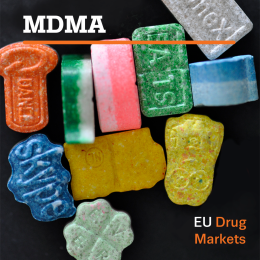
MDMA remains a popular drug used in the European Union that is generally associated with episodic patterns of consumption in nightlife and entertainment settings. While current data suggest an overall relatively stable situation in respect to MDMA use, there are considerable differences at national level.
Europe is a large-scale producer of MDMA, with the domestic consumer market supplied by European producers. Similar to the production of other synthetic drugs in Europe, MDMA production is largely concentrated in, or around, the Netherlands. Large quantities of MDMA produced in Europe are also exported to markets outside the European Union, including Australia and the Americas.
As is the case with other synthetic drugs, MDMA producers often adapt their use of chemicals and precursors in order to avoid controls. Another development is the apparent increase in reports of accidents in MDMA production facilities, including fires and explosions, potentially due to the use of inadequate equipment and involvement of inexperienced producers. In common with other synthetic drugs, MDMA production also causes significant environmental damage due to the amount of chemical waste produced.
The overall strength of MDMA tablets and powders available on the retail market remains high by historical standards, although in some key countries there appears to be a downward trend. Nevertheless, the continued availability of high-dose MDMA tablets is of particular concern. Another threat is the recent emergence of novel MDMA consumer products, such as edibles and liquids, which may attract new consumer groups.
The adulteration of MDMA with other harmful substances also remains an ongoing issue, with potentially severe public health consequences. While adulterants are commonly found in MDMA tablets and powders, there have been incidents of adulteration with new psychoactive substances, particularly cathinones. It also appears that ‘pink cocaine’ or ‘tucibi’, a mixture of MDMA with ketamine, cocaine or 2C-B first reported in Latin American countries, is emerging on the European market. Taken together, these developments show that the European MDMA market is dynamic and resilient.
New psychoactive substances
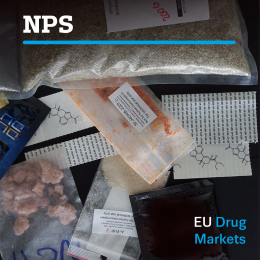
The trade in new psychoactive substances (NPS) represents a significant and dynamic challenge to the EU drug market, as these substances constantly change to evade legal restrictions. In 2022, a record 30.6 tonnes of new psychoactive substances was seized in Europe, due to a relatively small number of large seizures.
While the overall number of new psychoactive substances appearing for the first time in Europe has declined in recent years, the market remains dynamic, with hundreds of substances detected and monitored each year by the EU Early Warning System. The exploitation of variations in national drug control laws allows some new psychoactive substances to re-emerge after extended periods of absence.
Digitalisation has played a large role in facilitating the sale and distribution of new psychoactive substances. The online availability of these substances poses regulatory challenges, highlighting the need for effective measures to monitor and control online sales.
New psychoactive substances are predominantly shipped to the European Union from outside Europe. While China continues to be a major supplier, control measures on certain synthetic substances (such as cathinones, cannabinoids and opioids) appear to have prompted a proportion of NPS production to shift to India – which has emerged as a major source, probably due to limited domestic controls.
In Europe, some synthetic cathinone production is also observed, particularly bulk quantities of 3-CMC and 4-CMC. The possibility of production of other substances remains a threat, particularly as few precursors of new psychoactive substances are currently controlled.
Large-scale European cathinone seizures, involving bulk imports from India, are intercepted mainly by the Netherlands and Spain for apparent distribution across Europe. There is also an increasing trend in the supply of psychoactive pharmaceutical ingredients in bulk powder form to the European Union, suspected to originate from chemical and pharmaceutical companies outside Europe.
Since 2022, semi-synthetic cannabinoids have been sold openly in Europe as ‘legal’ replacements for cannabis and delta-9-THC. They are made from naturally occurring cannabinoids, such as cannabidiol that is extracted from low-THC cannabis (hemp). Bulk quantities have been imported from the United States, but they are also produced in Europe. They are sold as vapes, edibles and other sophisticated products that may be attractive to young people.
There are signs that new synthetic opioids, such as the nitazenes, are more available in parts of Europe. The mis-selling or adulteration of established opioids with these potent substances may also be increasing. This increases the risk of overdose and can cause outbreaks. These changes are likely driven by supply side factors, including possible heroin supply disruptions.
Recently, mixtures of new opioids with benzodiazepines (‘benzo-dope’) or the animal sedative xylazine (‘tranq-dope’) have been reported in Europe. First seen in North America, the mixtures are linked to increased harms, including risk of overdose.
Harms associated with new psychoactive substances remain a significant concern, particularly in relation to acute poisonings. Providing effective harm reduction measures remains a complex challenge, given the diverse and continually evolving nature of these substances, and the fact that consumers may be unaware of the specific new psychoactive substances they are using, as they may be mis-sold as other drugs or used as adulterants.
Actions to address current threats and increase preparedness

Monitoring and responding to the multiple threats that are posed by the EU drug market requires a multidisciplinary, flexible and future-oriented approach – mitigating harms and seizing opportunities for positive change. This section outlines the key areas that need to be addressed in order to respond effectively to current and future threats arising from EU drug markets.
Improve the intelligence picture: detection, monitoring and analysis
- Strengthen the systematic monitoring and analysis of the EU drug market, including precursors, illicit drugs and new psychoactive substances, making further use of advanced methods and technologies, such as artificial intelligence and satellite imagery analysis.
- Enhance detection and monitoring of particularly harmful substances with significant negative implications for public health, such as synthetic opioids and new psychoactive substances.
- Further strengthen threat assessments across the drugs supply chain, including a focus on how developments outside Europe may impact on the EU drug market.
- Improve monitoring and analysis of drug market-related violence, using comparable indicators and tools, with the aim of developing a deeper understanding of its causes. In conjunction, prioritise the mapping of criminal networks that pose the highest threat.
- Enhance monitoring and analysis of the use of online platforms to trade and distribute drugs. Particular attention should be paid to developments on the surface web and social media platforms, especially in relation to their use by young people.
- Develop new frameworks to analyse the potential impact of legislative changes on illicit drug markets. This will require improved understanding of the size of the drug market and its possible impacts on governance.
Strengthen responses to reduce supply and enhance security
- Strengthen operational responses against criminal networks, particularly against high-risk criminal networks and high-value targets. The latter include the brokers and facilitators that enable illicit activities, such as money-laundering networks.
- Further prioritise operational activities that dismantle entire criminal networks and their associates.
- Make full use of relevant European tools for operational coordination and international cooperation, in particular operational task forces and joint investigation teams.
- Enhance responses to the trafficking and diversion of precursors and essential chemicals used in drug production. Enhanced strategies are required to prevent criminal networks from exploiting weaknesses of current control measures and to reduce the supply of precursors.
- Strengthen administrative barriers to prevent criminals from exploiting legal loopholes and the licit economy. This should include enhanced and targeted measures to tackle corruption to prevent criminals from undermining the rule of law.
- Enhance interdiction capacity at seaports, post and parcel hubs in Europe. This should include the implementation of advanced monitoring technologies and tools.
- Strengthen and further prioritise crime prevention policies focused on young people at risk of exploitation and recruitment by criminal networks. Prevention and awareness programmes targeted at online risk behaviours among young people should also be enhanced.
Strengthen international cooperation
-
Strengthen engagement and cooperation with international organisations and third countries to tackle criminal networks across the entire supply chain for illicit drugs. Particular attention should be paid to improving cooperation at key hubs for drug flows destined for the European Union.

- Promote the exchange of data and intelligence on drug trafficking networks, routes and trends to enhance situational awareness and coordinated responses between the European Union and third countries.
- Further support the implementation of relevant European regulations and international agreements to harmonise legal frameworks to disrupt the drugs trade. Particular attention should be paid to improving frameworks for extraditing and prosecuting criminals operating in external countries.
- Strengthen public-private partnerships to prevent the exploitation of licit business structures and international trade routes. This includes prioritising improved resilience against criminal activity in key logistics hubs.
Invest in capacity-building
- Increase the human and financial resources devoted to operational and strategic responses. Particular attention should be paid to capacity-building in key entry points for drugs flows to Europe, and to ensuring coherence and alignment with established best practice.
- Strengthen investment in the development and implementation of innovative detection, monitoring and analysis technologies.
- Further invest in the training of key workers and officials, both within Europe and in key external countries, to raise awareness and further disseminate best practices to prevent criminal activities.
- Enhance assistance and capacity-building support to third countries on key drug trafficking routes to Europe, focusing on law enforcement, border control and drug treatment and harm reduction programmes.
Strengthen policy, public health and safety responses
- Further enhance evidence-based policymaking to mitigate the negative health and security impacts of illicit drug markets. Specifically, future-oriented policy approaches and responses are needed, based on detailed threat assessments, to anticipate and proactively mitigate emerging threats.
- Improve targeted crime prevention efforts, focusing on vulnerable communities.
- Enhance investments in targeted and evidence-based prevention, treatment and harm reduction interventions to mitigate the harmful consequences of drug use.
- Improve policy awareness and responses to the environmental risks and damage associated with drug production, trafficking and use.
Towards a coherent approach
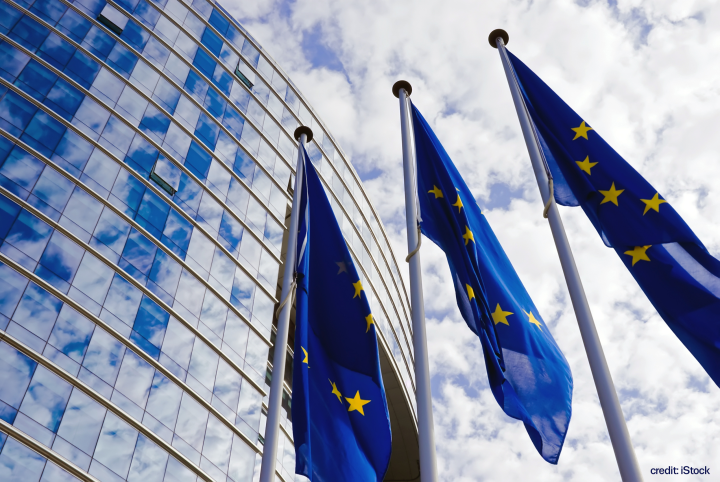
The EU legislative framework is key to providing a coherent approach for law enforcement and judicial authorities in tackling organised crime. This legislative framework provides Member States with efficient tools, such as the European Multidisciplinary Platform Against Criminal Threats (EMPACT), to disrupt criminal actors across the supply chain for illicit drugs. Going forward, there is a need to strengthen other integrated approaches that address the root causes of illicit drug markets. To this end, policies and responses should aim to tackle the social, economic and psychological drivers of illicit drug markets. Continued implementation of all relevant measures under the EU legislative framework, along with the development of new policies and responses to tackle emerging threats, is of great importance to ensure coherence in the fight against organised crime.
Source data
The data used to generate infographics and charts on this page may be found below.
| Drug | Quantity seized | Number of seizures |
|---|---|---|
| Cocaine | 416 | -3 |
| Cannabis herb | 260 | -6 |
| Methamphetamine | 135 | 121 |
| Heroin | 126 | -40 |
| Cannabis resin | 77 | -37 |
| Amphetamine | 42 | -18 |
About this page
Recommended citation: European Monitoring Centre for Drugs and Drug Addiction and Europol (2024), EU Drug Markets Analysis: Key insights for policy and practice, https://www.emcdda.europa.eu/publications/eu-drug-markets/analysis-key-insights-policy-and-practice_en
Identifiers:
HTML: TD-05-23-510-EN-Q
ISBN: 978-92-9497-965-0
DOI: 10.2810/567901








